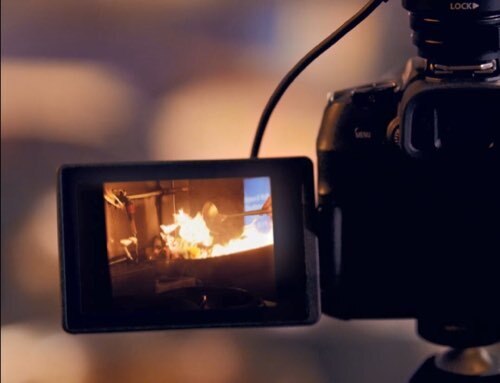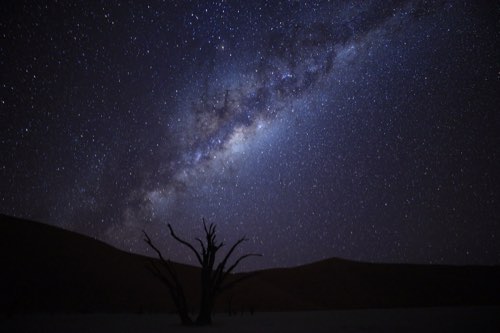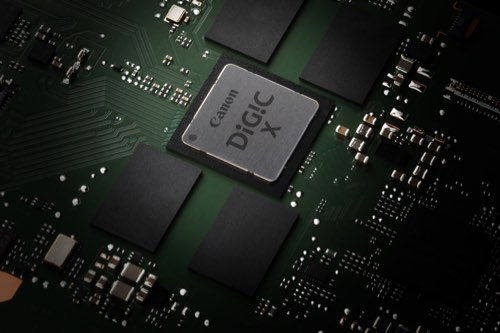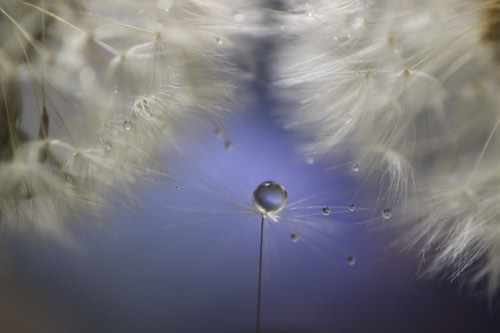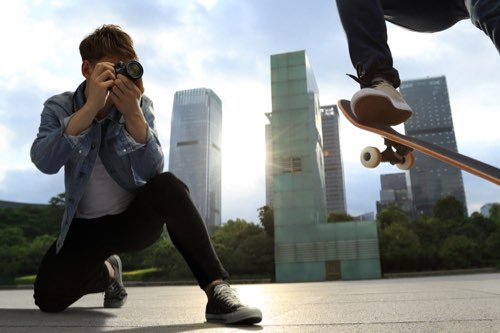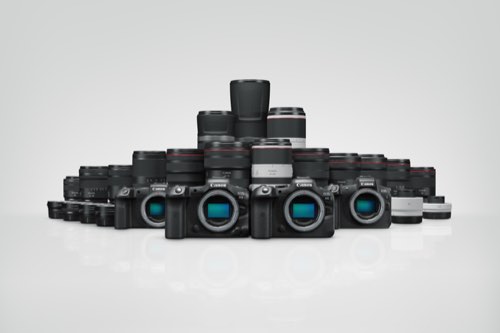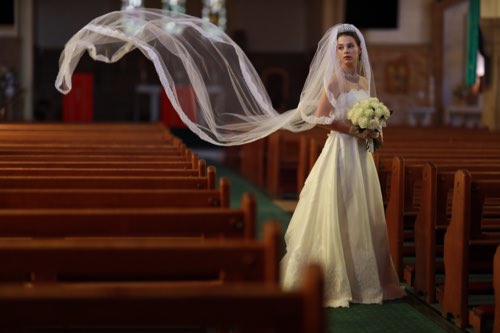7 Key Features of the EOS R50 V
From vlogs to reels and livestreaming, video is a content medium that is increasingly utilised, whether to showcase, inform, entertain, or inspire. Against this backdrop, what kind of camera would you need? Canon went against the grain and developed a camera for the content creators of today. The result: the video-first EOS R50 V. Announced on 27 March 2025, it is the first camera in Canon’s new EOS V series of mirrorless interchangeable lens cameras.

Note: Colour availability depends on region.
1. The EOS V series concept and style
1. The EOS V series concept and style
When it comes to Canon’s video equipment, the first thing that comes to mind for most people would be the Cinema EOS lineup, which is highly regarded among professional filmmakers. At the same time, Canon has also been improving on the video capabilities of every new EOS R series camera: the EOS R1 and EOS R5 Mark II, released in 2024, have updates that offer better integration with the Cinema EOS system.
However, these higher-end models aren’t necessarily the perfect match for the new generation of video creators, who create mainly social media content and need something more convenient, affordable, and smaller. Plugging that gap in the lineup is Canon’s answer—the EOS R50 V.
The EOS R50 V is the first interchangeable lens digital camera (ILDC) in Canon’s EOS V and PowerShot V series, which also consist of the PowerShot V1 and V10. While it has the same basic specifications as entry-level ILDCs like the EOS R50, it embodies a completely new video-first concept, resulting in vastly different design and control features.

Crafted with the needs of video creators in mind, the EOS R50 V’s exterior design departs from the traditional EOS curves, taking on a flatter, more squarish shape that enables easier access to buttons and dials even when the camera is rigged with accessories like a microphone, LED lights, and a gimbal.
Some other key differences:
- There are two REC buttons. One sits where the shutter button would normally be on still photography-centric cameras. Another is located in front, where it can be easily accessed from a front-facing position.
- There is a tally lamp that tells you when recording is in progress.
- The mode dial switches between various video modes—you use the rear LCD touchscreen panel to navigate still shooting modes.
- A second tripod socket has been incorporated into the right side of the camera, offering better stability and security when using a tripod grip or gimbal to film social media-friendly vertical videos.
RF-S14-30mm f/4-6.3 IS STM PZ: A kit lens with a built-in power zoom
The EOS R50 V is available in a kit with the RF-S14-30mm f/4-6.3 IS STM PZ, Canon’s first RF lens with a built-in electronically driven power zoom. The zoom ring is equipped with a midpoint-returning spring mechanism that eliminates the jerkiness and inconsistent speed that usually occurs when zooming by hand.

With the EOS R50 V, you can also operate the zoom using the zoom lever on the camera’s top panel. The zoom can be set at two speed modes, high or low, each with 15 definable speed levels: you can set different levels for the zoom ring and zoom lever.
2. Professional video features
2. Diverse recording modes that integrate with professional video systems
The EOS R50 V may be an entry-level camera, but it has robust video recording options that will serve professional workflows well. It is designed to work in the same ecosystem as the Cinema EOS series and advanced EOS R-series cameras, which is why it records in the broadcast and filmmaking industry-standard XF-HEVC S and XF-AVC S formats. It is also equipped with the ability to oversample from 6K to deliver 4K videos with enhanced quality. You’ll be future-proofed when greater opportunities come knocking!

The EOS R50 V features a 24.2-megapixel APS-C format CMOS image sensor and Canon’s powerful DIGIC X image processing engine. An APS-C sensor is similar in size to the Super35mm sensor used on many cinema cameras like the EOS C70—bigger than a smartphone image sensor, and we know that sensor size matters! You’ll be able to achieve impactful visuals with beautiful, natural shallow focus effects.
Movie recording format
|
|
|
|
|
|
|
|
|
|
|
HDR PQ Canon 709 Canon Log 3 PQ HLG BT.709 Std |
|
|
|
|||
|
|
|
|
|
|
|
|
|
The EOS R50 V’s adoption of the industry-standard XF-AVC S and XF-HEVC S recording formats supports professional workflows that the conventional DCF-standard MP4 format cannot handle. Besides high-quality 4K 29.97 /25.00 / 23.98 fps videos oversampled from 6K, it can also record cropped 4K 59.94 / 50.00 fps videos. YCC 4:2:2 10-bit recording is available in all formats, providing richer tones and gradations that will delight detail-oriented content creators.
Also see:
Videography FAQ: What are 8K, 4K, and Full HD? How Do I Use Them?
Videography FAQ: What do 4:2:2 and 4:2:0 mean?
3. 3 different colour modes: Picture Style, CP, Color Filter
3. 3 different ways to achieve your ideal colours
The EOS R50 V has three different colour modes that make it easier to achieve the mood and visual tones often seen in films and television dramas:
i) Picture Style: the conventional colour profiles present on all EOS cameras;
ii) Custom Picture (CP): The colour profiles on the Cinema EOS system; and
iii) Color Filter: a new function that offers 14 colour presets.
CP supports Canon Log 3 videos, which retain more tonal detail but otherwise look flat without post-processing, and can be used to apply and preview looks, colours, and adjustments, supporting colour grading. It also allows easier matching with Cinema EOS visuals, which streamlines the workflow on projects where the EOS R50 V is used alongside Cinema EOS cameras.
Meanwhile, the Color Filter effects offer a fast and intuitive option for users who want to apply different visual tones without colour grading.

The COLOR shortcut button on the camera rear allows easy one-touch access to the colour mode menu, where you can toggle between the three colour modes.
14 Color Filters: Apply your idea of “cinematic”.
From retro greenish tones to red accents and variations of teal and orange, the 14 Color Filters allow you to easily apply different colour tones. You can see and adjust the results while you’re shooting!

Watch: Color filters in video
An example of four Color Filters and how they dress up your video!
- ClearAmber: Low contrast, bright shadows, with light amber overall.
- ClearLightBlue: Low contrast, bright shadows, with light blue overall
- TastyWarm: High saturation and bright midtones, with warm colors overall
- Septiatone: Faded with a sepia filter effect overall
Canon Log 3 supported

The EOS R50 V supports log recording, a feature usually found on higher-end cameras. It offers the Canon Log 3 format, which can be handled with simple colour grading.
4. One-touch high-quality livestreaming
4. Convenient high-quality livestreaming
The EOS R50 V’s relatively large sensor and ample convenient features also benefit livestreaming, whether you’re selling products, holding a live online concert, broadcasting your gameplay, or simply connecting with your audience. Simply connect the camera to your PC or smartphone, either with a cable or wirelessly, to stream in high-quality smoothly and effortlessly.

Supports 4 ways to livestream

The EOS R50 V has a Livestreaming shortcut button that calls up the “Live streaming” menu. There are four ways connect the camera to your livestreaming platform:
- Through a USB-C cable to a PC
- Through a HDMI cable (via a switcher) to a PC
- Wirelessly to a smart device via the free Camera Connect smartphone app
- Wirelessly to a smart device via the Live Switcher Mobile multi-camera app
All you need to do is make sure you set up your PC or smartphone beforehand!
Supports USB power supply for longer livestreams

As the EOS R50 V supports UVC/UAC, just a single USB-C cable connection to a PC is needed for video conferencing and livestreaming. When streaming in Full HD, the camera draws power from the PC*, so you can livestream for long durations without worrying about running out of batteries. When livestreaming using Smooth Skin** mode or in the high-quality cropped 4K 60 fps mode, you can also make use of the Movie for Close-up Demos AF mode, which automatically switches focus from your face to a product placed in front of the camera.
*Cable must support USB Power Delivery and at least 5V/1.5A power supply.
**Cropped 4K 60 fps livestreaming is not available in Smooth Skin video mode.
5. Beginner-friendly ease of use
5. Even beginners can get creative with video easily

Unlike the conventional PASM mode dial on existing EOS cameras, the EOS R50 V’s video-focused mode dial switches between video shooting modes:
- Scene Intelligent Auto movies(A+)
- Special Scene movies (SCN)
- Slow & Fast Motion movies (S&F)
- Creative movies
- 3 custom modes (C1-C3)
Still shooting modes can be accessed using the rear LCD touchscreen.
Slow & Fast Motion movies mode
One new feature debuting on the EOS R50 V is the Slow & Fast Motion movies mode, which offers an intuitive way to capture slow and fast motion footage even without technical knowledge. You can slow down intense action by as much as 2.5x (NTSC)/ 2x (PAL) when shooting in 4K, and up to 5x (NTSC) or 4x (PAL) when shooting in Full HD; alternatively, show the passage of time or create a timelapse by recording fast motion video that speeds motion up by up to 60x (NTSC) or 50x (PAL) in both 4K and Full HD.
Cinema View: Cinematic footage instantly

The new Cinema View mode records footage in the 2.35:1 widescreen aspect ratio, which is often used in films and considered to result in a more cinematic look. The mode also switches the frame rate to the 23.98 (NTSC) or 25.00 (PAL) fps, close to the frame rate often used for films, so motion takes on a cinema-like quality. It can be combined with the Color Filters and Slow & Fast Motion movies to easily create visuals with a more cinematic feel.
Supports the EOS VR system
As the EOS R50 V supports the EOS VR system, which consists of cameras, lenses, and software that work together to streamline the 3D VR production workflow, creators keen on producing visuals with a difference can combine it with one of the compatible VR lenses below to create stunning high-quality 3D VR images.

RF-S3.9mm f/3.5 STM Dual Fisheye
Has dual fisheye lenses that cover a 144° angle of view, creating immersive 3D VR that transports you into the scene.

Creates high-quality spatial 3D images that make scenes come to live right in front of you when viewed with the Apple Vision Pro.
Other video features:
The EOS R50 V features a host of other modes that allow users to get creative easily. These include:
- Special Scene movie modes such as Smooth Skin movies, Movies for Close-up Demos, and Movie IS mode.
- Timelapse Movies, which uses the camera’s built-in interval timer to capture stills and stitch them into fast-motion video
Professional display settings such as false colours, zebras, and a new level display and Kelvin white balance display during video shooting help advanced users fine-tune their exposure and white balance on the spot.
6. A powerful AF and subject tracking system
6. Outstanding subject detection and tracking with Dual Pixel CMOS AF II
Equipped with Canon’s powerful Dual Pixel CMOS AF II sensor-based phase detection AF system, the EOS R50 V can acquire and track subjects over the entire image area when shooting both videos and stills. Its deep-learning based algorithm can detect humans, animals (dogs, cats, birds, and horses), motorsports vehicles (two-wheel and four-wheel drives), airplanes, and trains. You can also configure eye detection to prioritise either the right eye or left eye.
The camera also features the Register People Priority function. Previously found only on higher end EOS cameras like the EOS R1, EOS R3, and EOS R5 Mark II, the feature is useful for focusing on a specific person in crowded scenes.
The EOS R50 V has strong low light autofocusing performance for a camera of its class, with the ability to autofocus in conditions as dark as EV-2.5 during 4K recording and EV-3 during Full HD recording.
7. Full-featured stills shooting, too!
7. Excellent still shooting performance
While the EOS R50 V’s ergonomics, controls, and interfaces are designed to be video first, it is equipped with the excellent still shooting features found on counterparts like the EOS R50. Its 24.2-megapixel APS-C CMOS sensor captures subjects down to their fine details, with the ability to create seamless background bokeh for clear subject-background separation.
Capable of continuous shooting up to 15 fps with the electronic shutter, and up to 12 fps with the electronic 1st-curtain shutter, the EOS R50 V is well-equipped to capture picture-perfect frames of fast-moving subjects and unpredictable moments, especially when combined with Dual Pixel CMOS AF II’s fast and precise subject detection and tracking capabilities. The 14 Color Filters that turn footage instantly cinematic are also available during still shooting, providing another tool for unleashing creativity.

EOS R50 V: Key specifications
| Dimensions (approx.): | 119.3 × 73.7 × 45.2mm |
| Weight (approx.): Including battery pack and SD card |
370g (black), 375g (white)* *Colour availability depends on region. |
| Image sensor: | APS-C CMOS |
| Image processing engine: | DIGIC X |
| Effective pixels: | 24.2MP |
| AF system: | Dual Pixel CMOS AF II |
| Highest frame rate/ video resolution: | 4K 60p (cropped) 4K 30p (no crop, oversampled from 6K) FHD 119.88 fps (with audio) S&F mode: FHD 119.88 fps (no audio) |
| HDR profiles: | Canon Log 3/ HDR PQ/ HLG |
| Native ISO range: | 100 to 32,000 (stills) 100 to 12,800 (video) |
| Max. burst speed: | 12 fps (electronic 1st curtain shutter) 15 fps (electronic shutter) |
| Battery pack: | LP-E17 (Same as the EOS R50, EOS R10, EOS R8, PowerShot V1, and many other cameras) |
| Audio: | LPCM 4CH/ AAC 2CH |
EOS R50 V: Sample images

EOS R50 V/ RF-S14-30mm f/4-6.3 IS STM PZ/ FL: 22mm (35mm equivalent)/ Manual exposure (f/6.3, 1/160 sec)/ ISO 250/ Picture Style: Portrait

EOS R50 V/ RF20mm f/1.4L VCM/ FL: 20mm (32mm equivalent)/ Manual exposure (f/4, 4 sec)/ ISO 400

EOS R50 V/ RF-S14-30mm f/4-6.3 IS STM PZ / FL: 30mm (48mm equivalent)/ Manual exposure (f/6.3, 1/200 sec)/ ISO 400

EOS R50 V/ RF-S14-30mm f/4-6.3 IS STM PZ / FL: 30mm (48mm equivalent)/ Manual exposure (f/6.3, 1/50 sec)/ ISO 400
Find out more about the EOS R50 V through our video playlist below:








